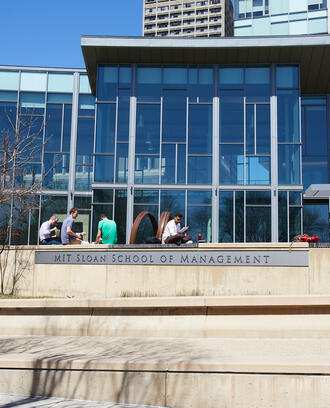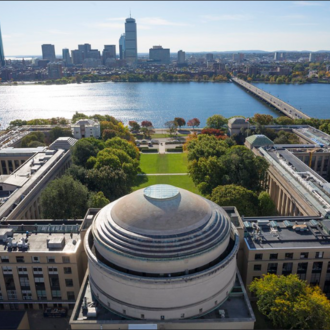MIT Sloan Fellows MBA Program
Leadership
Creating A Human-Centric Organization In A Volatile Global Arena
By
Reaching back to his childhood in Monterey, Mexico, Mauricio Chapa, SFMBA ’19, can remember the ways the company he works for now shaped his life. Chapa is Division Vice President for Talent and Compensation at Sigma, a division of ALFA, the seventh-largest company in Mexico. Chapa worked at ALFA for six years before transitioning to its subsidiary and says the company’s powerful commitment to community is one of the factors that motivates him to remain part of the team.
Mauricio Chapa SFMBA ’19
As a child, Chapa’s parents took him to the elaborate family-oriented complex that ALFA developed for the community, which includes gardens, an aviary with rare birds, and the state-of-the-art science museum and planetarium that fostered Chapa’s appreciation for science and technology. In fact, it led him to pursue his MBA at MIT.
When Chapa was a student in the MIT Sloan Fellows MBA Program, he was taken aback at the astonishment of his classmates when he talked about ALFA’s commitment to community. “ALFA has always believed that what’s good for the community is good for ALFA—that the success of both are inextricably linked.” Chapa explains that the company’s core ethos hasn’t changed since it was established as a brewery at the close of the 19th century. ALFA’s generosity of spirit makes his life as an HR executive more rewarding, he says. The challenges of motivation and retention, for example, are easier when employees feel that the company is invested in their wellbeing.
Redefining community in a global organization
But community in 2020, he points out, has very different ramifications than it did back in 1890. Today, workplace culture must transcend physical location. ALFA and its subsidiaries have a footprint in more than 25 countries. Employees in Argentina, Poland, and India, for example, can’t take advantage of the extensive amenities available to its employees in Monterey. How do you instill a shared, cohesive culture and a strong sense of community across so many different time zones?
In addition, ALFA has in its stable a very diverse set of industries—aluminum auto components, petrochemicals, oil and natural gas, and refrigerated foods—each with its own subculture. How do you retain a unified corporate culture across industries and continents? “It’s all about technology,” says Chapa. “ALFA is launching a digital platform to bring together everyone under one umbrella so they can bond, interact, collaborate on a project, converse, share ideas—even recipes. The generations that are coming into the workplace now are comfortable forging strong communities through social media platforms.”
Merging companies and company cultures
Chapa notes that during his career in HR, he has been especially aware of the challenge of preserving culture following a merger or acquisition. “It’s one thing to merge two companies—quite another to merge two company cultures. It’s essential to respect the existing culture of the company that is being acquired but, at the same time, make sure the employees of the new entity share the values of the company they are now a part of. The challenge requires awareness and sensitivity. There are no two scenarios alike, so it’s important to take each case separately and deal with it thoughtfully.”
It’s a delicate but crucial balance, Chapa says, and one that requires careful thought and strategy. “When do you centralize, and when do you decentralize? That is one of the key challenges of multinational companies. How do you get the most out of diverse synergies while reinforcing common values and avoiding cross-cultural misunderstandings and mismatches?”
He cites another human resources challenge for multinational companies—working from home. “The ability to work remotely is actually mandated by the government in some countries,” he notes, “while workers in other countries simply don’t have access to an infrastructure that makes working remotely possible. You want to have a policy that applies equally to all employees, but sometimes that simply isn’t possible. You have to find a way to mitigate that inequality.”
Your employees are your customers
Bottom line, Chapa says: A good human resources department regards its employees as its customers. “Organizations should want to establish a healthy relationship with its employees from the outset and work continually to keep them happy. There used to be a sense that the company was doing you a favor by employing you. That mindset has been turned on its head. We are continually refining how to connect with workers.”
What that signals, Chapa says, is that the era of the one-size-fits-all benefit plan is over. “HR must connect with employees, understand their personal situations, and be able to work with them to provide individualized benefits that enable them to do their best work. Maybe they need housing closer to work or help finding childcare. As with any customer, it helps to know who you’re serving, what they need, and what motivates them. The result? Happier employees who are invested in the company. In the end, they just perform better.”



